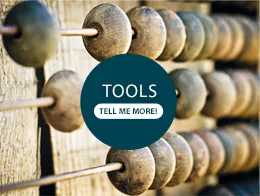Early last year, Rahul Kumar found himself in an incredibly frustrating — and frightening — situation. On a trip to Mumbai, his father became so ill that they needed to find a doctor. They called upon a local physician, but when he showed up, he fumbled around with a dead battery in the blood pressure monitor and tried to use a thermometer clearly not cleaned since its last use. When Kumar and his father opted for a local clinic, it was the same story. Broken screens. Staff unable to use diagnostic supplies. Wait lines out the door. In all, it took hours to diagnose his father with food poisoning.
Kumar, who is the first in his family to grow up in the United States, was so appalled by the ordeal he decided to investigate. “If this is what’s going on for the 30% of the country’s population that lives in urban areas, what is really going on for the 70% in the rural areas?” Kumar, 25, wondered. So instead of heading back home to the United States, where he is a senior consultant for IBM, he travelled around rural India speaking with patients, physicians, and anyone involved in healthcare who would talk to him.
He found crisis after crisis, but also some surprises. “Some supplies weren’t working, some supplies looked like they were from the 1800s,” Kumar recalls. “The state of healthcare — especially in rural areas — was abysmal.” But Kumar also learned something inspiring. “The doctors want to work in the rural areas,” he says. “They want to help people out. The problem was they don’t have the supplies or the infrastructure.”
Returning to the U.S., Kumar was hellbent on finding solutions. A year later, he has done just that through the PocDoc, a product created by his startup, Elements Digital Health. Marketed as the “Swiss army knife of diagnostic tools,” the handheld device connects to a smartphone through Bluetooth technology. It takes temperatures, measures blood oxygen, pressure, and glucose levels, and even serves as an ECG. After winning the $50,000 Social Venture Competition at New York University’s Stern School of Business earlier this spring, Kumar plans to quit IBM on August 18 and pursue Elements Digital Health full-time.
“It was a little too bureaucratic for me,” he says of his time at IBM. “I wouldn’t say the environment wasn’t conducive to succeeding, but I just needed something a little more liberating.”
NATURE AND NURTURE LED TO AN ENTREPRENEURIAL BUDDING
Kumar was almost literally bred to be an entrepreneur. When both of his parents came to the U.S., they opened a business in the health and beauty distribution industry. “Solving the challenges has always been what’s most interesting to me,” says Kumar, who grew up in Edison, New Jersey, where Thomas Edison invented the lightbulb. When he got older and realized all of his friends’ parents had to report to supervisors at work, Kumar was confused. “I didn’t realize that people had to go to work and report to a boss,” he says. “It’s almost like an alien concept to me.”
In high school, Kumar and some friends formed a Bhangra team, performing traditional North Indian folk dances. Of course, having the team wasn’t enough — Kumar wanted to make money to support the team. So he created team apparel and began to sell it to fellow students. Unfortunately it was against school policy to run a business on campus, so not only was the business shut down, but Kumar was given detention and all the shirts were seized. He got the last laugh, though. The shirts became backups for students who forgot their normal gym garb at home.
“Always understand the regulatory framework that you’re working within,” Kumar advises. “Even if that’s your principle.”
FINDING NYU STERN’S $200K ENTREPRENEURIAL CHALLENGE
When Kumar returned to the U.S. in the spring of 2015 with a newfound passion to solve healthcare infrastructure problems in India, he immediately turned to his alma mater, New York University. Specifically, he went to see the NYU $200K Entrepreneurship Challenge, where $200,000 is divvied up into three new venture categories: the New Venture Competition, the Technology Venture Competition, and the Social Venture Competition.
The challenge has been around for 18 years and has had a social track for the past 14 years. “The reason why we saw the need to develop another competition,” says Cynthia Franklin, director of entrepreneurship at NYU Stern’s Berkley iLab, “is we were seeing a pretty significant increase in the number of students who had ideas that fell into the category of wanting to do good and make money. The overriding motivation was to eradicate some critical issues that many people in the world experience.”
This year, Franklin says, about a quarter of the more than 200 teams to enter the challenge were in the social venture track, down from an incredible 42% two years ago.
MINING FOR ENGINEERS
When Kumar watched the competition, he knew he was seeing a piece to his entrepreneurial puzzle. The timing was perfect for him to organize a team and devise a product in time for the 2016 competition. Being a finance major at NYU’s Stern School, he hightailed it to the engineering school to start asking questions.
He met with a lukewarm response.
“When I spoke to professors, they were like, ‘Oh yeah, this is so simple, anyone on campus can build this,'” Kumar remembers. “And I was like, ‘OK, let me talk to anyone on campus.'” And so he did. The problem? “I got shunned by a lot of them because the engineering school thinks the business school just takes engineers for granted,” Kumar laughs.
But Kumar, a self-described “tech geek,” knew he wanted to build something electronic, which meant he needed engineers. So he found a couple entrepreneurial student groups housed at the engineering school and blasted them with emails asking for help on his project. A few responses trickled in. Despite not having many interested candidates to choose from, Kumar stayed picky.
Having someone who could build a product was obviously important, but Kumar weighted their passion to solve the challenge just as much, if not more. “For me, it was really, ‘Are you passionate about the cause?'” he says of interviews with potential teammates. “You have to check their personalities and make sure that your team is going to be aligned under one central mission, and that your team is not going to have their own personal agendas.”
ELEVATING FROM THE REST OF THE SOCIAL VENTURE COMPETITION
Kumar found an electrical engineer to build the product, now dubbed the PocDoc, and a mechanical engineer to create a 3D print of it. Such a diversity in skill sets and roles is a fact of life at NYU, Franklin says. Not coincidently, she adds, diversity of skill sets also leads to teams more likely to win competitions like the $200K Entrepreneurship Challenge and have successful startups.
Elements Digital Health’s identification of a problem and creation of a product-market fit helped elevate them from the other teams — which numbered more than 50 — that competed in the social venture portion of the contest, Franklin says. Indeed, India’s patient-to-doctor ratio is about 1,700 to 1 — much more than the 1,000-to-1 ratio recommended by the World Health Organization — and Kumar’s on-ground research revealed that not only are physicians in India over-worked, they are underprepared to make simple diagnostic evaluations because of a lack of health tools and devices.
Lastly, Franklin says, the biggest key to a successful social enterprise — and a differentiator in the potential of Elements Digital Health — is the ability to measure the impact the venture will have. “We want to know, what is the outcome that you’re expecting? What are the results? How are you measuring that this will actually have meaningful positive impact?” Franklin says. “We need to see it will have measurable impact — not just an idea that makes you feel warm and fuzzy in theory, but something that you can come back from five years from now and have a measurement.” Elements Digital Health checked all the boxes and netted $50,000 as the winner of the Social Venture Competition.
Now, with a newfound legitimacy and funding in hand, Kumar says he and his team must nail down some manufacturers in India or China. After that, they will test and develop the PocDoc with the goal to bring it fully to market within the next year or two.



